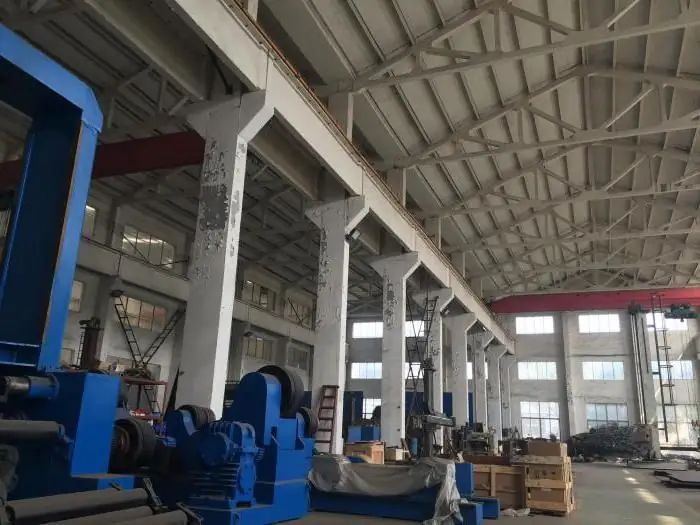2025 Author: Howard Calhoun | [email protected]. Last modified: 2025-06-01 07:12:56
Accounting for fixed assets under the simplified tax system is used to reduce the taxable base. However, this is not always possible. The fact is that there are two versions of the simplified system.

With the simplified tax system "Income", accounting for fixed assets will not lead to a decrease in the taxable base. In this case, there are no taxable costs. Accordingly, with the simplified tax system "Income", accounting for fixed assets can only be carried out to analyze the state of assets. This information can be used to make management decisions. But on the simplified tax system "Income minus expenses" accounting for fixed assets is very appropriate. Let's take a closer look at it.
OS Characteristics
Regulatory acts in force in the field of accounting, established certain features that must comply with the OS. Fixed assets are material assets:
- Designed to operate for a long period (more than a year).
- Used for profit.
- Depreciable.
- The cost of which is above the established limits. For accounting, the marginal priceis fixed in the accounting policy and should be at least 40 thousand rubles, in tax accounting the figure is higher - at least 100 thousand rubles.
In accounting under the simplified tax system, the costs of fixed assets (their purchase, modernization, improvement, additional equipment, reconstruction, repair) are included in the taxable base, reducing it.
Capitalization
On the simplified tax system, accounting and tax accounting of fixed assets are, as a rule, carried out by organizations. Usually the documentation is formed in a simplified form, since the enterprises are small. Individual entrepreneurs may not keep accounts. Nevertheless, they still need to determine the cost of fixed assets, since the indicators are used for tax purposes.
In accounting under the simplified tax system, fixed assets are accounted for at their original cost. If the entrepreneur maintains abbreviated reporting, then the objects are accounted for:
- At the cost formed from the price indicated by the supplier in the accompanying documents, and installation costs - when purchasing the OS.
- According to the amount of payment for services to the contractor - when creating an object.
The rest of the costs that arise when purchasing or creating an OS are written off as other expenses.

If fixed assets are accounted for under the simplified tax system in full, the initial cost, in addition to the above amounts, includes:
- Loan interest if payment is made with borrowed funds.
- Transportation costs.
- Consulting costs.
- Fees andduties (customs, etc.).
- Other expenses. Among them, for example, the cost of a business trip to purchase an OS.
If the counterparty (supplier, contractor) issues an invoice to the enterprise with VAT, the tax is also included in the cost of the object, since economic entities using the simplified tax system are not its payers.
Nuances
When accounting for fixed assets under the USN, the commissioning of an object is carried out on the day when the necessary installation, testing, commissioning activities are completed. After the completion of such work, its initial cost is calculated.
The day of posting the object does not depend on the date of transfer of the documentation required for state registration of rights. It is determined by the fact of determining the initial st-ti OS. This rule applies only to those objects that must be registered (real estate, for example).
To account for fixed assets under the simplified tax system, unified forms of documents are used. They are an act according to f. OS-1 and inventory card f. OS-6.

Accounting for fixed assets under the simplified tax system: postings
For convenience, transactions and the accounts on which they are reflected are presented in the table.
| Fact of business activity | db | cd |
| Reflecting the cost of purchasing or creating an object | 08 | 02, 70, 69, 10, 60 |
| Reflection of magnitudeinstallation costs | 07 | 60 |
| Passing an object for assembly | 08 | 07 |
| Recording an asset as a fixed asset | 01 | 08 |
The amount indicated in the last entry is the initial cost of the fixed assets, i.e. the total amount of all costs.
Useful life
In accounting under the simplified tax system, depreciation of fixed assets is charged over the life of the object. It is determined by the Classifier, broken down by groups.
The term is reflected in the inventory card for the object.
Depreciation
In accounting under the simplified tax system, deductions for depreciation of an object can be made at different intervals - once a quarter or a year. For household or industrial inventory, write-offs can be made immediately and in full upon receipt.
Depreciation starts in the month following the month of acceptance of fixed assets for accounting, and ends after the month in which the object was written off. For the period of modernization, repair, reconstruction, conservation, re-equipment, accrual is suspended.

The table below shows the accounts used to reflect depreciation for various fixed assets.
| Object purpose | db | cd |
| Use for production | 20 | 02 |
| Exploitation for managerial purposes | 26 | 02 |
| Trading | 44 | 02 |
Tax accounting
When maintaining it, the moment the object arrives at the enterprise is of particular importance. The fixed asset can arrive either before the transition to the simplified tax system or during the application of this special regime.
A feature of tax accounting is that fixed assets costs are recognized after payment and provided that the object has already been credited and operated by the enterprise.
Attribution of fixed assets costs to expenses for taxation purposes is carried out in the year the funds are put into operation. For real estate, slightly different rules apply. Expenses for it are included in the taxable base only after state registration.
Another condition for tax accounting is that material assets must be depreciable.
The cost of modernization, re-equipment reflect the same as the cost of acquiring and creating an object. In this case, one should be guided by the provisions of paragraph 3 of Article 346.16 of the Tax Code.
Receipt of an object under USN
OS for taxation purposes is accepted at the initial cost (as in accounting). It is transferred to expenses in equal installments throughout the year on the last day of each quarter. Depending on the time of capitalization of material assets, costs can be written off:
- In 1 sq. - at 1/4 of the cost at the end of the 1st quarter, half a year, 9 months. and year;
- In the 2nd - 1/3 at the end of 6, 9, 12 months;
- In the 3rd - 1/2 at the end of 9, 12 months;
- In the 4th - the total amount at the end of the year.
Receipt of an object before switching to USN
If the capitalization of fixed assets occurred during the period when the company used the fixed assets, the write-off of expenses for taxation purposes is necessary in a different order.

At the end of December of the last year the organization operates under the main tax regime, the residual value of the object is taken into account. This indicator is reflected in column 8 of the Book of income and expenses.
The method of transferring the cost to expenses under the simplified tax system is affected by the period of use.
If the period is less than 3 years, the entire cost for the year of operation, established at the time of the start of using the simplified tax system, is written off. 1/4 of the price is calculated and included in the expenses on the last date of each quarter. With a period of 3-15 years, during the first year they write off half the cost (12.5% per quarter), in the second - 30%, in the third - 20%. If the period of use exceeds 15 years, the write-off is carried out at 10% for 10 years.
Example
Let's assume that in 2016 an enterprise switched from OSNO to USN, and at the time of the transition it had a machine tool, the residual value of which at the end of December 2015 amounted to 160 thousand rubles. The term of use of the equipment is 5 years.
In 2016, only 50% of the cost is taken into account in expenses - 80 thousand rubles. This value must be divided by 4 equalparts. Each of them - 20 thousand rubles. - debited on the last day of the respective quarter.
In 2017, 48 thousand rubles will be transferred to expenses. - 30% of the residual price. This amount should also be divided into 4 equal parts (12 thousand rubles). In 2018, 32 thousand rubles will be written off. This is 20% of the residual art. The amount is also divided into 4 parts and written off at the end of each quarter for 8 thousand rubles.

Accounting for fixed assets on the simplified tax system in 1C
As mentioned above, in order to accept an object for accounting, it must be purchased and put into operation. To recognize expenses in tax accounting, it is necessary to record the fact of payment for the purchase.
To reflect the purchase operation in the program, you need to open the "Purchase" tab and create a document "Receipt of products and services". Select "Equipment" as the type of operation. In the tabular part, you need to indicate the nomenclature, quantity and cost of the purchased object. In the column "Account" is entered 08.04.
To reflect payment, a payment order is filled in.
On the day of putting the OS into operation, the document "Acceptance for accounting" is issued. In it, in addition to general information about the object, there are two tabs. The first is accounting, and the second is tax accounting. If the accountant is well versed in the features of reflecting information, he will be able to fill in all the fields correctly. In this case, accounting operations (accounting and tax) in the program will be automatically performed when posting the document "Closingperiod".
Let's say an enterprise purchased a computer worth 25 thousand rubles. The object was put into production use on February 12, 2010. Accordingly, the same date should be in the "Acceptance for Accounting" document.
In the "OS" tab, you must specify the name of the asset. It must be assigned an inventory number. In addition, the account from which the asset was written off (08.04) is indicated. Next, the type of operation performed on the object is indicated. This will be "Acceptance for accounting with subsequent commissioning." Next, the method for reflecting depreciation costs is determined, the corresponding account is indicated to which depreciation amounts will be written off.
Special attention should be paid to the "Tax Accounting" tab. In the field "Cost" (expenses for the simplified tax system) of the object, the full value of the initial price of the asset should be indicated. The amount and dates of payments actually made on the fixed asset are reflected separately in the appropriate columns. If the cost of the equipment was fully repaid, then the entire amount (for example, the same 25 thousand rubles for a computer) can be recognized as expenses.
The most important thing when reflecting fixed assets is to correctly enter information in the "Procedure for including items in expenses". The program will offer to attribute it to expenses or depreciable property or not to include it in expenses. If the fixed asset was purchased for a fee, the period of its use exceeds a year, and the cost exceeds 20 thousand rubles, it is classified as depreciable property.

In the "Accounting" tab, you should specify the accounts on which depreciation accounting and calculation operations will be taken into account, and the method of its calculation. The enterprise may not be limited to the common linear method. Here it is necessary to assess the situation. It is likely that it would be more convenient to calculate depreciation using the reducing balance method using an acceleration factor.
If fixed assets are purchased in installments, the costs of it are subject to write-off in terms of the amounts actually transferred to the seller.
Conclusion
As a rule, when taking into account fixed assets on a simplified system, there are no particular difficulties. However, there are some tax considerations to keep in mind. An accountant needs to closely monitor all changes in legislation.
Significantly facilitates the work of a 1C software specialist.
Recommended:
Structure and composition of fixed assets. Operation, depreciation and accounting of fixed assets

The composition of fixed assets includes many different assets that are used by the enterprise in its core and non-core activities. Accounting for fixed assets is a difficult task
Posting to fixed assets. Basic accounting entries for fixed assets

The non-current assets of an enterprise play an important role in the production cycle, they are associated with logistics processes, trade, provision of services and many types of work. This type of assets allows the organization to earn income, but for this it is necessary to carefully analyze the composition, structure, cost of each object. Constant monitoring is carried out on the basis of accounting data, which must be reliable. Basic postings on fixed assets are typical
Sale of fixed assets: postings. Accounting for fixed assets

Material base, technical equipment of any enterprise depends on the structure of the main assets. They are an integral part of the production process, they are used in the implementation of all types of economic activity: the provision of services, the performance of work. The use of BPF with maximum efficiency is possible with proper planning of their operation and timely modernization. For a comprehensive analysis of this asset, it is necessary to correctly reflect it in all types of accounting
Minimum tax under the simplified taxation system (simplified taxation system)

All start-up entrepreneurs who have chosen a simplified taxation system are faced with such a concept as the minimum tax. And not everyone knows what lies behind it. Therefore, now this topic will be considered in detail, and there will be answers to all relevant questions that concern entrepreneurs
Do I need a cash register for individual entrepreneurs with the simplified tax system? How to register and use a cash register for individual entrepreneurs under the simplified tax

The article describes the options for processing funds without the participation of cash registers (CCP)

